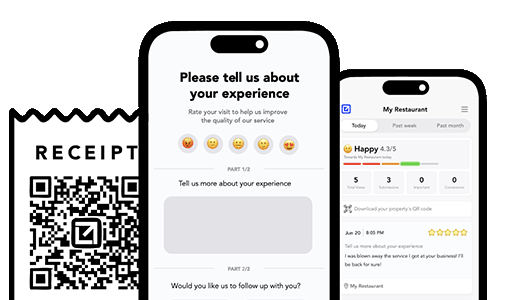Slow Day Tips for Salons
Creative and profitable ways salons can make the most of a slow day.

TLDR: Most businesses bury or ignore bad feedback, but the smartest use it to grow. This guide shows how to turn criticism into loyalty by responding well, fixing issues fast, and following up. You’ll also learn how tools like VisibleFeedback catch complaints early so they stay private and productive.
Let’s get one thing out of the way: negative feedback sucks. No one likes reading that they disappointed a customer, messed up a delivery, or dropped the ball somewhere in the process. But once you get past the sting, there’s something powerful underneath. Bad feedback is one of the few unfiltered windows into how people actually experience your business.
👉 If you want a full strategy for turning that window into a growth engine, our What To Do About Bad Reviews guide walks through exactly how to respond, recover, and rebuild your reputation.
The trick is to separate the tone from the truth. Some complaints come in hot, loaded with emotion. Our Why Customers Leave Bad Feedback article breaks down the psychology behind those emotions, and why even small frustrations can lead to big public complaints. That doesn’t make them invalid, it makes them human. The worst thing you can do is ignore it. Silence tells the customer you don’t care. And it tells anyone reading your reviews the same thing. A thoughtful response, especially one that’s prompt and personal, can shift the entire narrative.
Start with acknowledgment. Don’t jump to defense. Something like, “I’m really sorry you had that experience. That’s not what we aim for,” instantly lowers the temperature. From there, ask for context. “Could you tell me more so we can make it right?” That line alone has salvaged dozens of situations for businesses using VisibleFeedback. It shows you’re listening and willing to act.
Then act. Fix what you can. If you dropped the ball, own it. If it was a one-off, say so. If it’s systemic, thank them for helping you catch it. And here’s the part most businesses miss: follow up. A second message, a call, or even just a “We made the change, thank you again” goes further than you think. People don’t expect perfection. They expect responsiveness. When the feedback is already on the table, our What to Do With Bad Feedback guide shows step-by-step how to respond in a way that keeps customers, and sometimes turns critics into advocates.
That’s why I built VisibleFeedback to funnel complaints to a private space first. Not to hide them, but to handle them. We give businesses a chance to resolve issues before they go public. When that works, and it often does, you keep a customer, avoid a negative review, and sometimes even inspire a positive one.
Negative feedback is uncomfortable, but it’s also honest. It reveals blind spots, exposes weak links, and gives you a blueprint to improve. Treat it like gold. Because in a world where most customers say nothing and just walk away, the ones who speak up are giving you a gift. It’s on you to use it. And if that gift happens to be on Yelp, remember that one bad Yelp review can cost you thousands in lost business, especially with iPhone users who see Yelp ratings first in Apple Maps.

Bad reviews can scare away potential customers. Intercept feedback in real time with VisibleFeedback.

Austin Spaeth is the founder of VisibleFeedback, a simple tool that helps brick-and-mortar businesses intercept negative reviews before they go public. With a background in software development and a passion for improving customer experience, Austin built VisibleFeedback to give business owners a frictionless way to collect private feedback and turn unhappy visitors into loyal advocates. When he’s not working on new features or writing about reputation strategy, he’s probably wrangling one of his six kids or sneaking in a beach day.
Whether you have no reviews, bad ones, or great ones, we’ll help you turn your feedback into growth.
No credit card required.
⛨ Trusted by over 137 local businesses like yours